- News
- Reviews
- Bikes
- Accessories
- Accessories - misc
- Computer mounts
- Bags
- Bar ends
- Bike bags & cases
- Bottle cages
- Bottles
- Cameras
- Car racks
- Child seats
- Computers
- Glasses
- GPS units
- Helmets
- Lights - front
- Lights - rear
- Lights - sets
- Locks
- Mirrors
- Mudguards
- Racks
- Pumps & CO2 inflators
- Puncture kits
- Reflectives
- Smart watches
- Stands and racks
- Trailers
- Clothing
- Components
- Bar tape & grips
- Bottom brackets
- Brake & gear cables
- Brake & STI levers
- Brake pads & spares
- Brakes
- Cassettes & freewheels
- Chains
- Chainsets & chainrings
- Derailleurs - front
- Derailleurs - rear
- Forks
- Gear levers & shifters
- Groupsets
- Handlebars & extensions
- Headsets
- Hubs
- Inner tubes
- Pedals
- Quick releases & skewers
- Saddles
- Seatposts
- Stems
- Wheels
- Tyres
- Health, fitness and nutrition
- Tools and workshop
- Miscellaneous
- Cross country mountain bikes
- Tubeless valves
- Buyers Guides
- Features
- Forum
- Recommends
- Podcast
feature
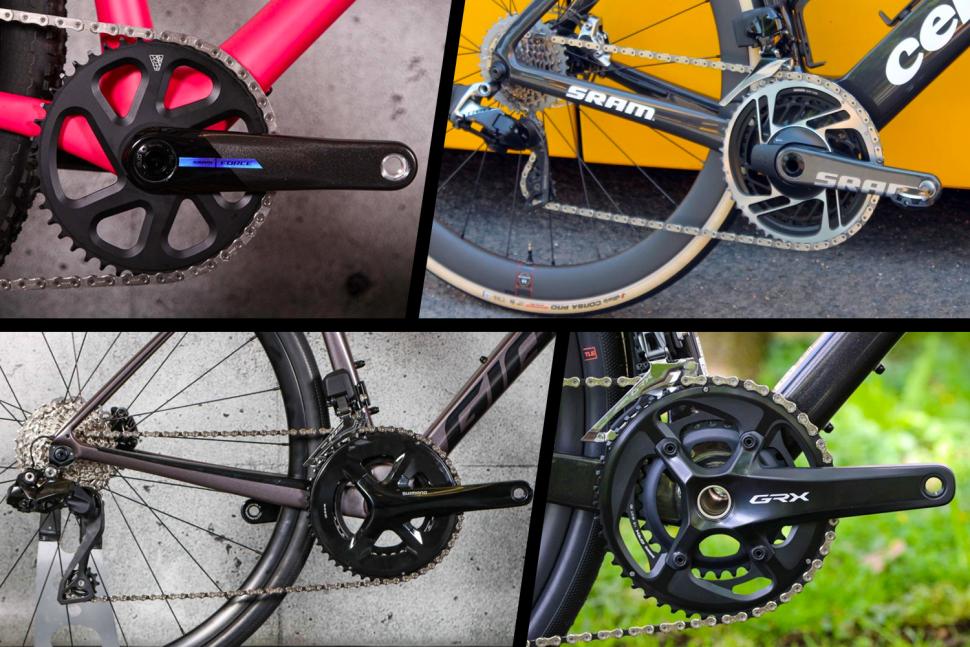 Which chainset is right for you? Feb 2025
Which chainset is right for you? Feb 2025Which chainset is right for you? Should you choose a semi-compact, a compact or something else?
The chainset, called a crankset in some parts of the world, is the name given to the chainrings and the crank arms that turn them, and it helps define your bike's gearing. Different chainsets make a big difference to the character of your bike and the way it feels when you ride.
> Check out our Beginner’s Guide: Understanding Gears here
Most road bikes come with a double chainset, meaning that you have two chainrings. The larger chainring gives you bigger, harder-to-turn gears that move you further per pedal revolution – so it's suitable for higher speeds – while the smaller chainring gives you gears that are easier to turn but move you a shorter distance per pedal revolution – so it’s suitable for lower speeds, including riding uphill.
However, some bikes – especially gravel and mountain bikes – come with a single chainring (called a 1x system) matched to a wide-range cassette (the group of sprockets that sit at the centre of the back wheel). Other bikes might use a triple chainset, meaning that you have three chainrings, although these are increasingly rare.
Let’s go through the main road systems in turn.
54/40T
A chainset with a 53-tooth (or 52-tooth) outer chainring and a 39-tooth inner chainring used to be the default option for speed-focused road bikes, but that has changed over recent years with the big brands moving in other directions. In fact, the last bike we reviewed that came with a 53/39 chainset was way back in 2017.
Shimano groupsets don’t offer a 53/39-tooth option anymore. These days, its Dura-Ace top-level road groupset comes in an option with 54-tooth and 40-tooth chainrings (and various other configurations) to satisfy the need for speed among racers. This is rarely specced on complete bikes – although some time trial/triathlon bikes do come with a 54/40 fitted – but it’s available aftermarket. This is the choice of most pro road racers in the majority of circumstances, although there are always exceptions. They often switch to larger chainrings for time trials.
Shimano doesn’t provide this 54/40-tooth option further down its range, and neither Campagnolo nor SRAM offers it. SRAM’s AXS wireless electronic systems have their own take on gearing with smaller chainrings and a 10-tooth smallest sprocket (see below) – although its Red AXS Power Meter Kit does come in 52/39 and 54/41-tooth options (and even a 56/43 option for time trialling).
Campagnolo does offer 53/39-tooth and 54/39-tooth chainsets in its Super Record S Wireless groupset, and a 53/39-tooth option in its Record mechanical lineup.
Example bike Cube Aerium C:68X SLT
Compact chainset
A compact chainset has a 50-tooth outer chainring and a 34-tooth inner chainring. This means the gears are lower (easier to turn, but they’ll progress you a shorter distance per pedal revolution) than you get with a 54/40 or 53/39 chainset (above) with the same cassette.
For more details on that, see How much difference does a new chainset make? (below).
Compact chainsets have become massively popular because they allow you to keep moving up steep hills, albeit sometimes quite slowly, and many people prefer to turn smaller gears at a higher cadence (the number of pedal revolutions per minute) because it puts less stress on the knees.
The flip side is that you might run out of gears on very fast descents. In other words, you won’t be able to turn the pedals fast enough to make any difference to your speed above a certain point.
Reflecting their popularity, Shimano and Campagnolo offer compact chainsets across all of their road groupsets although, as we’ll see below, SRAM does things differently
Example bike Giant Defy Advanced 1
Semi-compact chainset
A semi-compact chainset, sometimes called mid-compact or faux pro, has a 52-tooth outer chainring and a 36-tooth inner chainring.
This means that the biggest gears aren’t quite as big as those of a 54/40 or 53/39 chainset but they’re not far off, and they’re larger than those of a compact.
The small gears aren’t quite as small as those of a compact chainset, but they’re smaller and easier to turn than those of a 54/40.
Semi-compact chainsets have become hugely popular over recent years because they offer something for most types of terrain. Many road bikes we review here at road.cc are fitted with these. Shimano, for example, offers semi-compact chainsets across its range of road groupsets, apart from entry-level Cues.
Example bike Orbea Orca M10iLTD PWR
Sub-compact
Want lower gears? A sub-compact chainset is a double with rings smaller than the compact's 50/34 pairing.
The gravel/adventure bike movement has been the main driver of sub-compact chainsets. Fat tyres and dirt tracks demand lower gears, especially if you’re carrying anything extra, like clothes and so on for an overnight stay.
Shimano offers its GRX RX820 gravel chainset with a 48/31-tooth chainset, for example, while its RX610 chainset comes with 46/30-tooth chainrings.
We think that sub-compact chainsets have a place in general riding too. As soon as you hit seriously hilly terrain, there’s going to come a moment when you need the lowest gear you can get. You might have blown up, you might have hit a 20% grade or steeper. Options like a Praxis Alba X chainset fitted with 48/32-tooth chainrings give you a slightly lower gear range for those situations.
Complicating things a little, Shimano offers 46/36-tooth chainsets in some groupsets – so the outer chainring is smaller than that of a compact, but the inner ring is larger. These are designed primarily for cyclocross, although there’s no reason why they shouldn’t be used elsewhere.
Example bike Bergamont Grandurance RD Elite
Triple chainset
A triple chainset is one with three chainrings. They used to be common – dominating in mountain biking – but they’re ever rarer these days.
We published an article titled ‘Are we seeing the death of the triple chainset?’ way back in 2017, and they’ve become even more thin on the ground since then.
You do get some very small gears with a triple chainset, but there’s a lot of duplication (different chainring/sprocket combinations giving the same, or virtually the same, gears) and most people find a double chainset with a wide-range cassette ample and more convenient to use.
Campagnolo doesn’t offer triple chainsets anymore – its last one was introduced way back in 2012 – and SRAM never bothered with road bike triples in the first place.
That said, a triple can be a good idea for something like a touring bike where you need those very small gears to climb while carrying a heavy load.
Swapping from a double to a triple, or the reverse, is quite an expensive process because you need to change other groupset components too.
Example bike Cinelli Hobootleg
1x (single) chainset
Bikes with single chainrings are nothing new, of course – there are millions of them out there – but most aren’t particularly performance-orientated. Over recent years, though, single chainring setups have become a popular option, beginning when SRAM introduced its first 1x drivetrain for mountain bikes in 2012, and extending onto gravel and road.
> 1x vs 2x: Are single chainring set-ups the future of road cycling or just another marketing fad?
SRAM offers single chainring versions of its road groupsets with wide-range cassettes. 1x groupsets are simpler because there’s no front derailleur or front shifter, there’s no chance of the chain rubbing on a non-existent front derailleur, and they can be quieter on rough surfaces.
A SRAM 1x system won’t appeal to everyone, but for a variety of applications such as gravel, adventure and cyclocross, it makes a lot of sense. 1x has also made an impact on the road. British brand Vielo produces only 1x bikes, for example.
SRAM’s 1x chainsets are available with a variety of different-sized chainrings to suit the riding you do.
Shimano offers 1x chainsets in its Cues range and also various 1x options among its GRX gravel components, and Campagnolo pairs a single chainring (there's no double option) with 13 sprockets in its Ekar gravel groupset. Most modern mountain bikes use a 1x drivetrain.
Example bike Vielo V+1 Race Edition Force AXS XPLR
The SRAM double chainset alternative
SRAM turned it up to 12 a few years ago with the Red AXS eTap groupset, quickly followed by a Force version for those without amazingly deep pockets. These days, Rival AXS and Apex (1x only) are 12-speed too.
Out back, the groupsets have cassettes that start with a 10-tooth sprocket, so there's no need for large chainrings to get high gears.
SRAM therefore offers chainring combinations of 46/33, 48/35, and 50/37, plus the Force Wide and Rival Wide systems have a 43/30 chainset.
However, all these chainsets are designed to work only with SRAM’s 12-speed system. In terms of the gearing they provide and how you’d use them, they pretty much map against the double chainsets we've discussed. If you're used to 53/39 you'd choose a SRAM 50/37. Happy with 52/36? Go for SRAM 48/35. The SRAM 46/33 gives a roughly equivalent set of gears to a compact chainset, while the 43/30 is SRAM's answer to sub-compacts.
As mentioned up top, a SRAM Red AXS power meter kit is available with various sizes of chainring, including 52/39, 54/41, and 56/43. You'd need to add these to an existing chainset.
Of course, the overall gear range you get will depend on the sprockets too, and SRAM tends to offer wide-ranging cassettes.
Example bike Specialized S-Works Tarmac SL8 - SRAM Red eTap AXS
How much difference does a new chainset make?
Say you have a typical 700c wheel fitted with a 25mm tyre, and you’re using an 11-34t cassette. That’s a fairly common setup.
If you have a 52/36 chainset, your smallest gear (36-tooth inner chainring x 34-tooth largest sprocket) is 27.9in. If that doesn’t mean much to you, check out our Beginner’s Guide: Understanding Gears for an explanation. Put another way, if you pedal at 80rpm, you’ll move at 6.6mph.
If you have a compact chainset, your smallest gear (34 x 34) is 26.4in, so quite a bit smaller. That means it’s easier to turn the cranks. If you pedal at 80rpm, you’ll move at 6.3mph, so a bit slower.
At the other end of the speed scale, say the maximum cadence you can hold for a short time is 120rpm. If you pedal a 52/36 chainset in your biggest gear (52 x 11), you’ll be able to pedal up to 44.5mph at this cadence.
Do the same thing with a compact chainset (50 x 11) and you’ll get to 42.8mph.
In short, a compact chainset will give you some small gears for keeping moving up steep hills while a 52/36 chainset will allow you to keep the pressure on for longer on fast descents.
Changing chainrings
What if you feel the chainset you’re currently using isn’t right for you and the riding you do?
Swapping chainrings can be a relatively straightforward job with basic tools, but you need to make sure you get new chainrings that are compatible with your chainset and the rest of your drivetrain. Chainrings come with different numbers of bolts, bolt circle diameters (BCDs) and bolt spacings, for example.
The point is that you need to be careful to buy replacement chainrings that work with your chainset, and don’t forget that if you change chainring size, you'll need to adjust the position of your front derailleur accordingly and alter the chain length too.
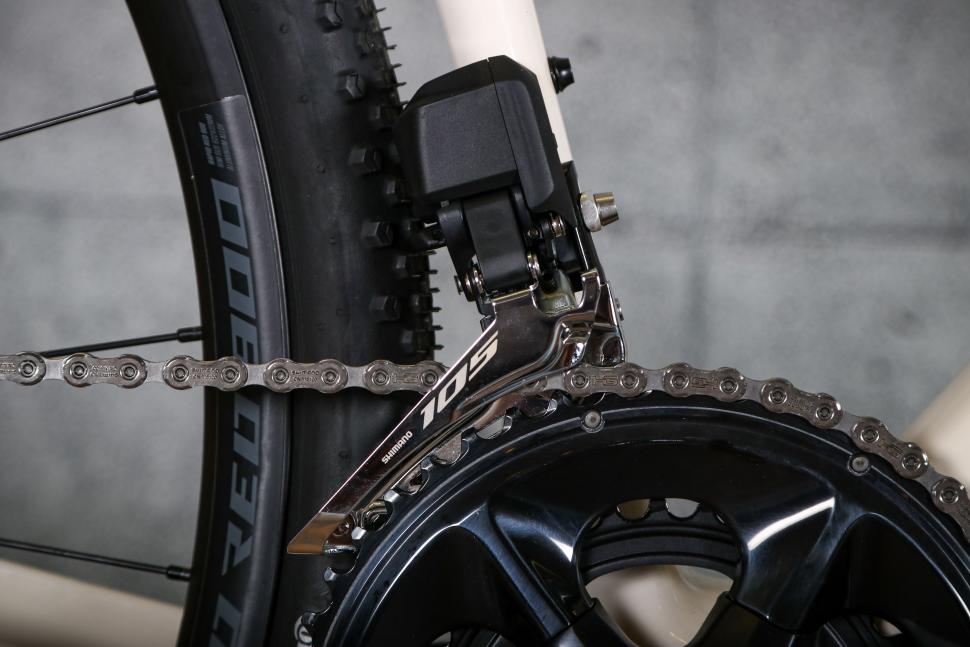 Also, make sure your derailleurs have the capacity to handle the chainring combo you’re thinking of introducing. A Shimano 105 Di2 front derailleur, can handle a large chainring of 50-52 teeth, for instance, and has total capacity (the difference in tooth count between the larger and smaller chainring) of 16. You can look up this info on the relevant manufacturer’s website.
Also, make sure your derailleurs have the capacity to handle the chainring combo you’re thinking of introducing. A Shimano 105 Di2 front derailleur, can handle a large chainring of 50-52 teeth, for instance, and has total capacity (the difference in tooth count between the larger and smaller chainring) of 16. You can look up this info on the relevant manufacturer’s website.
Mat has been in cycling media since 1996, on titles including BikeRadar, Total Bike, Total Mountain Bike, What Mountain Bike and Mountain Biking UK, and he has been editor of 220 Triathlon and Cycling Plus. Mat has been road.cc technical editor for over a decade, testing bikes, fettling the latest kit, and trying out the most up-to-the-minute clothing. He has won his category in Ironman UK 70.3 and finished on the podium in both marathons he has run. Mat is a Cambridge graduate who did a post-grad in magazine journalism, and he is a winner of the Cycling Media Award for Specialist Online Writer. Now over 50, he's riding road and gravel bikes most days for fun and fitness rather than training for competitions.
Latest Comments
- teckert 1 hour 16 min ago
Agreed. The selection process could be made a lot easier....
- thax1 2 hours 26 min ago
Unlike those year-round balmy, warm conditions in Denmark and Sweden where cycling to work, school and the shops is normal?
- thax1 2 hours 32 min ago
I guess we can take some solace that, a year on, it's down to 'only' £7,999....
- Rendel Harris 3 hours 25 min ago
Need to take your daughter and her very expensive instrument to her lesson with the best cello teacher in Kent?
- David9694 4 hours 45 min ago
Driver and passenger flee after smashing parked car into wall in Cheltenham...
- David9694 4 hours 50 min ago
Of course, to get a tougher sentence, you have to first secure a conviction:...
- ktache 5 hours 27 min ago
Timbuk2 seem obsessed by them, my tool roll has one and so does my apron. Their new courier bag adjustment buckle can be used as one, but it's ali...
- quiff 5 hours 57 min ago
Another oddity is that in the opposite direction it appears to be a bus and bike lane. If the timings are tight, I can imagine that crossing being...
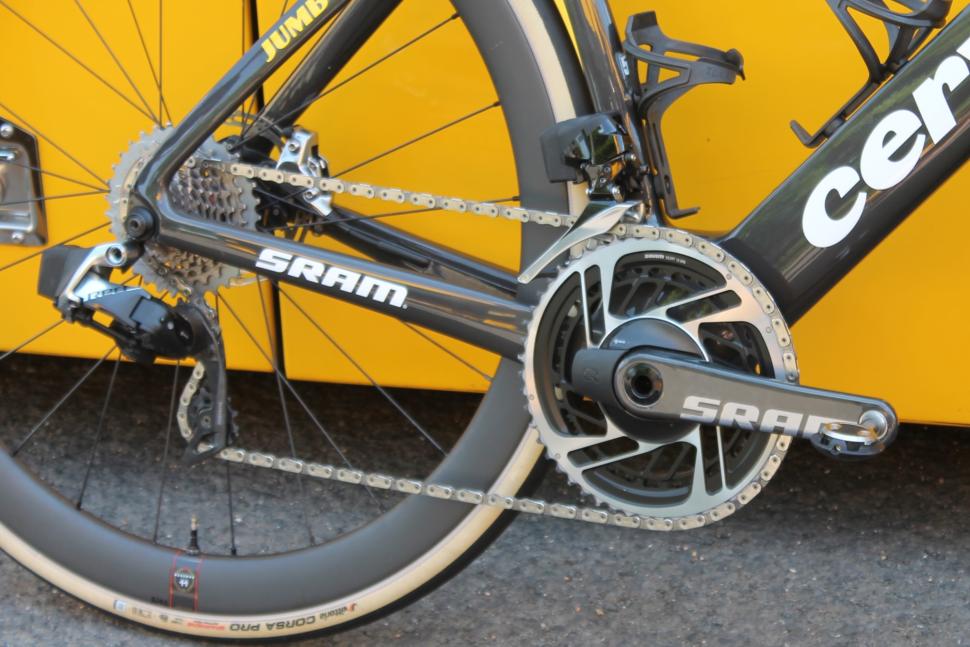



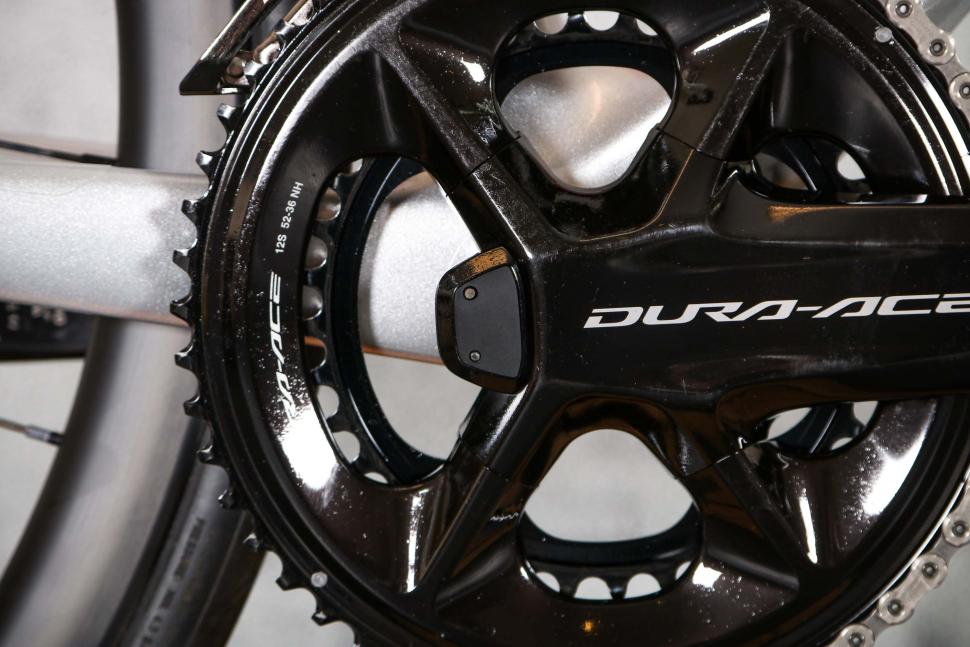

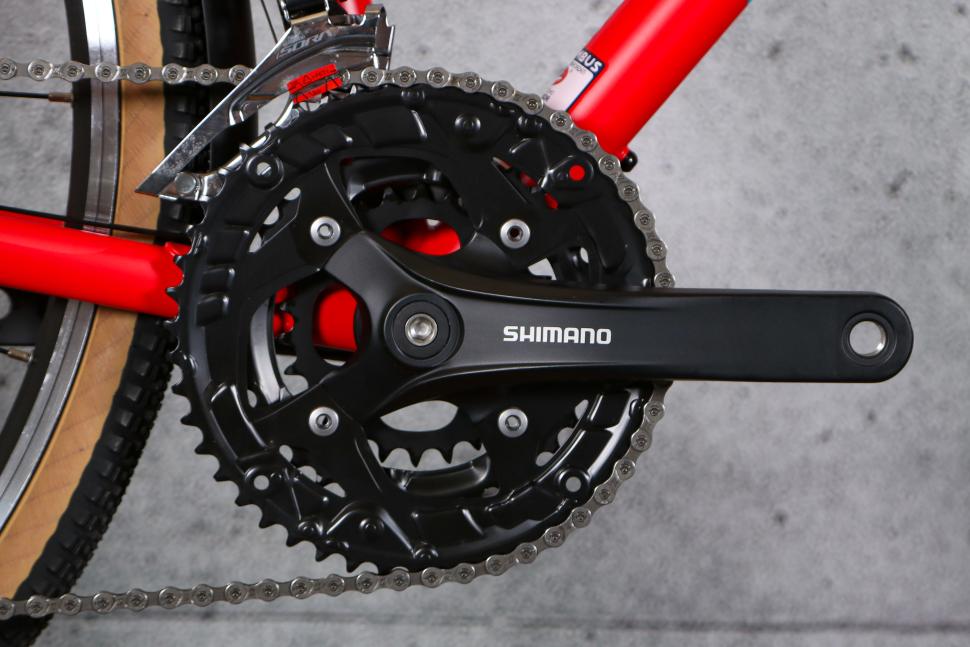

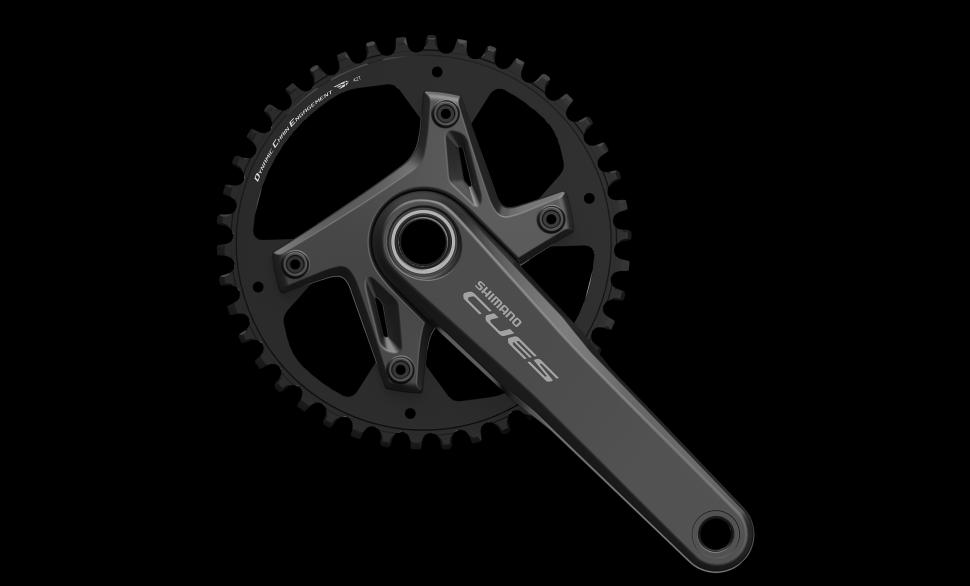


Add new comment
7 comments
Now that cassettes are getting bigger i have also rediscovered the benefits of the cx crankset. 46/36 with an 11-36 cassette is absolute goldilocks.
Now that I'm in my 70s, I don't have a big chainring larger than 42t on any of my bikes. When I started racing in the early 1970s, standard top gear on a road bike was 52-13, which is exactly the same gear as 44-11, so my 42-11 top gear is very little different. Most bikes sold to the public are way overgeared...
Absolutely. I've been considering whether to replace the 50T on my compact for 46T as I find too often I'm cross-chaining on rolling terrain. It's not as big a drop as people often think. Additionally, shifting from the 34T inner ring will be a smaller jump too (having run a triple for several years I find the 16T gap awkward in either direction).
Although I'm fairly fit now I'm in my late 50s and I expect to move to 46/30 or similar sub-compact gearing in due course.
I also agree with Jimthebikeguy.com's comment - it's about marketing, not real world practical gearing for normal people.
On my all-rounder bike 44-11 is the longest gear, with 24-43 being the shortest, this with 150 cranks. I'd generally be using 44-15 on flat road (not much of this in my area) to 24-36 on steep wet bridleway. I have a steep grass slope where 24-43 is useful but not breaking traction (avoid ruining the grass) and keeping the front wheel on the ground takes care.
I'm using 700c, 9-speed 46/30 with a ?-34 cassette for all my cycling including the Bob trailer. It's about right - I can't get up everything on my routes even on the road, but I'm usually grateful for the opportunity to walk for a bit when it gets that bad- such as Wrynose and Hardknott last autumn
For normal people, the ratios on a grx double are perfect, allied to a whacking great cassette. Because nobody needs to actually ride TDF pro gearing.
There's a growing market of super compact chain sets/cassette combos out there now. More folk are realising there's a lot of 'aspirational' gears on most OEM groupsets, and most of us, unless racing, would benefit from losing a few top end gears in favour of some lower spinny spin magic it up the hills gears.
Microshift Sword & Sword Black have a 46/29 with an 11-38 cassette.
Spa Cycles have offered sub compact and super compact chain sets that work on a road chain line for yonks - I'm running a 44/26 with 11-36 cassette road.
New Shimano Cues drop bar will also have a 46/30 or similar, with a wider cassette I think.
Lots of other brands have super compact stuff out there too, with a bit of research.